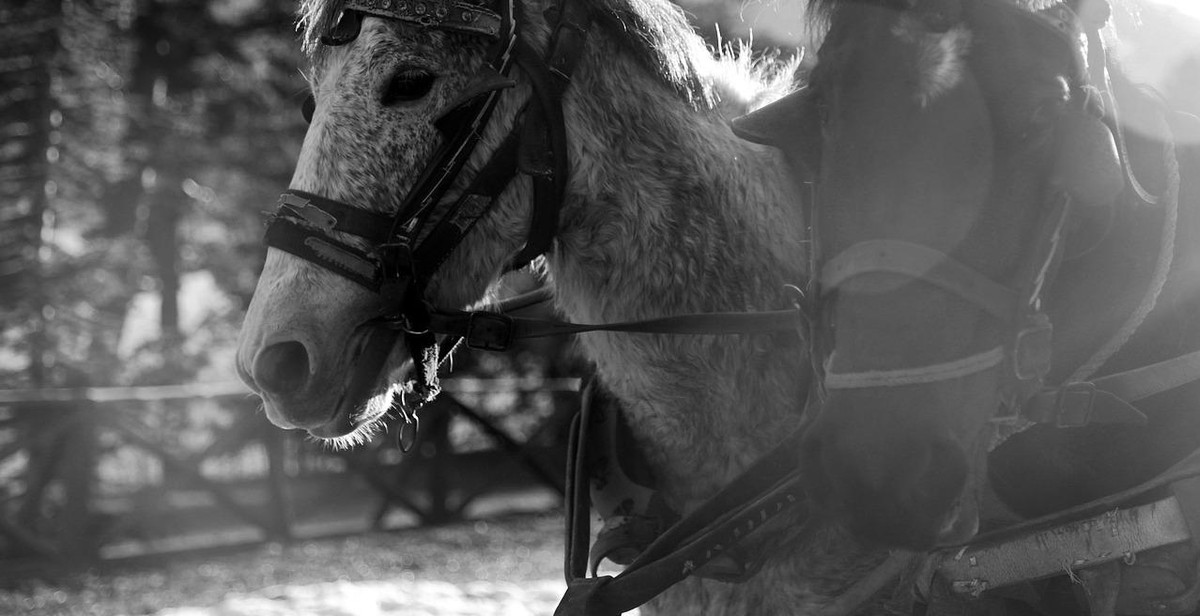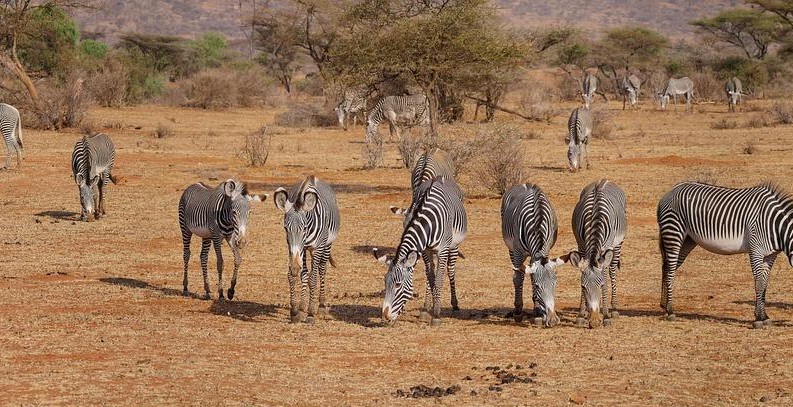How to Identify Zebra Species by Their Stripes: A Field Guide to Zebra Identification
Zebras are one of the most iconic animals on the African savannah. With their distinctive black and white stripes, they are easily recognizable and a favorite of wildlife enthusiasts and photographers alike. However, did you know that there are three different species of zebra, each with their own unique stripe patterns?
In this field guide, we will explore the different zebra species and how to identify them based on their stripes. As a professional wildlife photographer and safari guide with over 15 years of experience, I have had the opportunity to observe these magnificent creatures up close and personal. I have also studied their physical characteristics and behavior extensively, allowing me to identify each species with ease.
The Three Species of Zebra
There are three species of zebra: the plains zebra, the mountain zebra, and the Grevy’s zebra. Each species has its own distinct range, habitat, and stripe pattern.
The Plains Zebra
The plains zebra is the most common and widespread species, found in grasslands and savannahs throughout southern and eastern Africa. Their stripes are relatively thin and closely spaced, with a brown “shadow” stripe between each black stripe.
The Mountain Zebra
The mountain zebra is found in the mountainous regions of southern Africa. Their stripes are thicker and more widely spaced than the plains zebra, and they have a distinctive “gridiron” pattern on their rump.
The Grevy’s Zebra
The Grevy’s zebra is the largest and most endangered species, found only in northern Kenya and Ethiopia. Their stripes are the thinnest and most widely spaced of the three species, with a white belly and no shadow stripes.
In the following sections, we will delve deeper into each species’ stripe pattern to help you identify them in the field.

Why Are Zebra Stripes Important?
Zebra stripes are not just a pretty pattern; they serve several important purposes that are crucial for the survival of these animals in the wild. Here are three key reasons why zebra stripes are important:
Camouflage and Predators
One of the main functions of zebra stripes is to provide camouflage and confuse predators. When zebras stand together in a group, their stripes blend together and make it difficult for predators to single out an individual zebra to attack. Additionally, the stripes create an optical illusion that can confuse predators and make it challenging for them to judge the speed and direction of the zebras they are hunting.
Social Identification
Zebra stripes also serve as a way for members of a herd to identify each other. Each zebra has a unique stripe pattern, similar to a human fingerprint, making it easier for them to recognize their herd mates and offspring. This is especially important for young foals who can easily become separated from their mothers in the chaos of a stampede.
Heat Regulation
Another function of zebra stripes is to regulate body temperature in the hot African sun. The black stripes absorb more heat than the white areas, causing air currents to circulate above the zebra’s skin. This helps to cool down the zebra’s body temperature and prevent overheating, which is critical in the hot and arid African savannah.
Overall, zebra stripes are essential for the survival of these animals. They provide camouflage from predators, help with social identification within a herd, and regulate body temperature in the harsh African environment.
Types of Zebra Stripes
Zebras are easily recognizable by their unique black and white striped coat patterns. However, not all zebra stripes are the same. In fact, there are three different types of zebras, each with their own distinct stripe patterns: Burchell’s Zebra, Grevy’s Zebra, and Mountain Zebra.
Burchell’s Zebra
Burchell’s Zebra, also known as the Plains Zebra, is one of the most common and widespread species of zebra. Their stripes are thin and closely spaced, running horizontally across their body. The stripes on their legs are wider and more widely spaced than those on their body. Burchell’s Zebra also have a white belly and a white stripe down the middle of their back.
Grevy’s Zebra
Grevy’s Zebra is the largest species of zebra and has a more donkey-like appearance. Their stripes are thin and closely spaced, but they are arranged in a vertical pattern on their neck and torso. The stripes on their legs are also vertical, but they become horizontal on their hooves. Grevy’s Zebra have a white belly and a white muzzle.
Mountain Zebra
Mountain Zebra is the smallest species of zebra and has a more horse-like appearance. Their stripes are thicker and further apart than those of Burchell’s and Grevy’s Zebra. They have a distinctive “gridiron” pattern of stripes on their rump, with vertical stripes on their neck and torso. Mountain Zebra also have a white belly and a white stripe down the middle of their back.
| Species | Stripe Pattern | Other Distinctive Features |
|---|---|---|
| Burchell’s Zebra | Thin, closely spaced horizontal stripes on body, wider and more widely spaced stripes on legs | White belly and stripe down middle of back |
| Grevy’s Zebra | Thin, closely spaced vertical stripes on neck and torso, vertical stripes on legs that become horizontal on hooves | White belly and muzzle |
| Mountain Zebra | Thick, widely spaced stripes arranged in “gridiron” pattern on rump, vertical stripes on neck and torso | White belly and stripe down middle of back |
Identifying Zebra Species by Their Stripes
Zebras are known for their distinctive black and white stripes, but did you know that there are different species of zebras that can be identified by the width, spacing, color, shape, and even the presence of shadow stripes on their stripes? Here’s a field guide to help you identify zebra species by their stripes.
Stripe Width and Spacing
The width and spacing of a zebra’s stripes can help identify the species. For example, the Grevy’s zebra has thinner stripes that are spaced farther apart than the plains zebra, which has wider stripes that are closer together. The mountain zebra has vertical stripes on its neck and torso that are closer together than the horizontal stripes on its legs and rump.
Stripe Color and Shape
The color and shape of a zebra’s stripes can also provide clues to its species. The plains zebra has bold, black stripes that extend all the way down to its white belly, while the mountain zebra has brown stripes that fade to white on its underbelly. The Grévy’s zebra has narrow, vertical stripes on its neck and torso that branch out into a net-like pattern on its hindquarters.
Presence of Shadow Stripes
Some zebra species have additional stripes, known as shadow stripes, that run parallel to their main stripes. The plains zebra has shadow stripes that are faint but visible, while the Grévy’s zebra has prominent shadow stripes that give it a unique net-like appearance.
| Zebra Species | Stripe Width and Spacing | Stripe Color and Shape | Presence of Shadow Stripes |
|---|---|---|---|
| Plains Zebra | Wider stripes, closer together | Bold, black stripes that extend to underbelly | Faint but visible shadow stripes |
| Mountain Zebra | Vertical stripes closer together on neck and torso, horizontal stripes on legs and rump | Brown stripes that fade to white on underbelly | No shadow stripes |
| Grévy’s Zebra | Thin stripes, spaced farther apart | Narrow, vertical stripes on neck and torso that branch out into net-like pattern on hindquarters | Prominent shadow stripes |
By paying close attention to stripe width and spacing, color and shape, and the presence of shadow stripes, you can confidently identify different zebra species in the wild.
Other Physical Characteristics to Consider
While zebra stripes are the most distinctive feature that can be used for identification, there are other physical characteristics that should also be taken into consideration:
Body Shape and Size
Zebra species vary in body shape and size. Plains zebras have a more streamlined body shape, while mountain zebras have a stockier build. Grevy’s zebras are the largest of the three species, with a height of up to 6 feet at the shoulder and a weight of up to 990 pounds. Plains zebras are the most common and have a height of up to 5 feet at the shoulder and a weight of up to 770 pounds. Mountain zebras are the smallest of the three species, with a height of up to 4.5 feet at the shoulder and a weight of up to 660 pounds.
Ear Shape and Size
The shape and size of a zebra’s ears can also be used for identification. Plains zebras have relatively large, round ears, while mountain zebras have smaller, more pointed ears. Grevy’s zebras have the largest ears of the three species, which are also more pointed in shape.
Nose Shape and Color
The shape and color of a zebra’s nose can also be helpful in identifying the species. Plains zebras have a broad, black nose with a white muzzle. Mountain zebras have a more pointed, black nose with a white stripe down the center. Grevy’s zebras have a narrow, black nose with white nostrils.
| Species | Body Shape and Size | Ear Shape and Size | Nose Shape and Color |
|---|---|---|---|
| Plains Zebra | Streamlined body shape, up to 5 feet tall at the shoulder, up to 770 pounds | Relatively large, round ears | Broad, black nose with a white muzzle |
| Mountain Zebra | Stockier build, up to 4.5 feet tall at the shoulder, up to 660 pounds | Smaller, more pointed ears | Pointed, black nose with a white stripe down the center |
| Grevy’s Zebra | Tallest and largest of the three species, up to 6 feet tall at the shoulder, up to 990 pounds | Largest and most pointed ears | Narrow, black nose with white nostrils |
By taking into account these other physical characteristics in addition to the zebra’s stripes, you can become an expert in identifying different zebra species in the wild.

Conclusion
Identifying different zebra species can be a challenging task, but with the right knowledge and tools, it can become an enjoyable and rewarding experience. In this field guide, we have provided you with useful tips and tricks on how to identify zebra species by their stripes.
Remember, when identifying zebras, it’s crucial to pay attention to the size, shape, and spacing of their stripes. The Grevy’s zebra has narrow and closely spaced stripes, while the plains zebra has broad and widely spaced stripes.
It’s also essential to consider the location and habitat of the zebras. Mountain zebras are found in rocky areas, while plains zebras are found in grassy plains.
Another key factor to consider is behavior. Hartmann’s mountain zebras are known to be more aggressive than other species, while Grevy’s zebras are generally more solitary.
By combining all of these factors, you can confidently identify the different zebra species in the wild.
We hope that this guide has been informative and helpful to you. Remember, always respect the wildlife and their habitats, and never approach them too closely. Happy zebra spotting!
